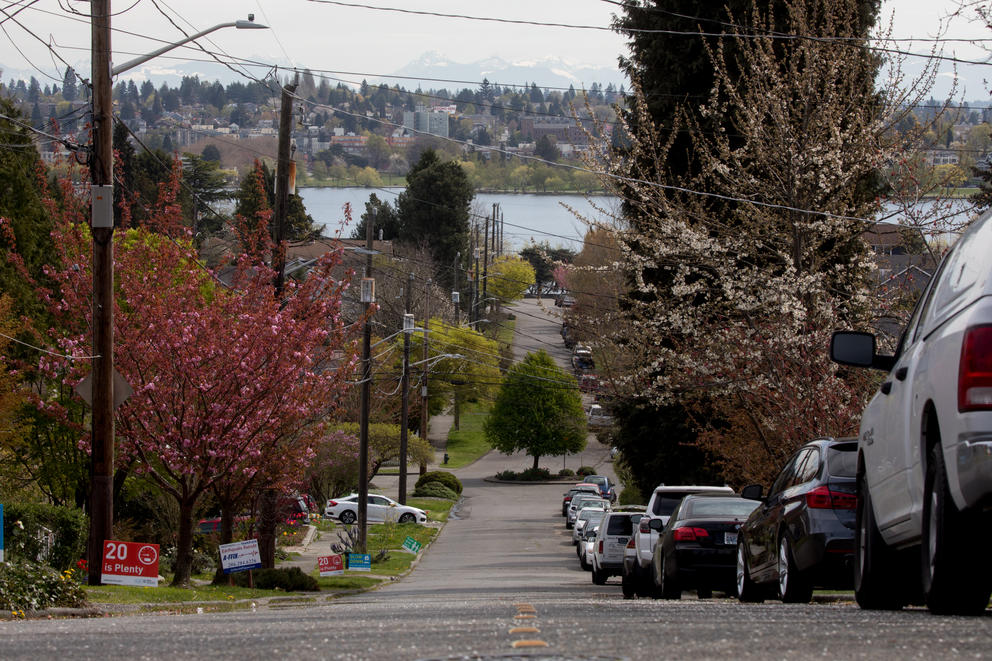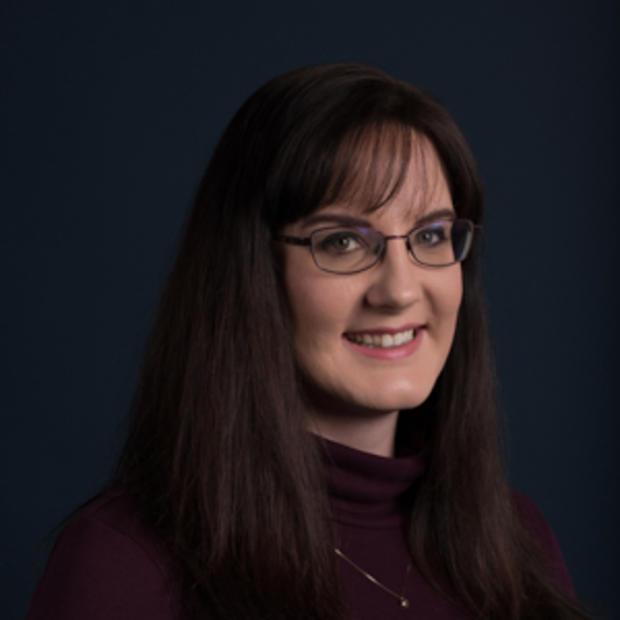And they say theirs is potentially just one example among many in a booming city where neighborhood needs and dynamics can vary greatly and where the public transit system is bursting at the seams, even as it’s still being built out to accommodate a growing metropolitan region.
“People need their car for living. What’s missing in this whole argument is: Commuting downtown is one need, but life is another need,” said Alice Poggi, a 40-year resident of Phinney Ridge and current president of the Phinney Ridge Community Council. She said city officials are overlooking the limits of public transportation, especially for aging residents and those with disabilities.
“They’re saying ‘take the bus, take the bus,’ ” she said, “but this is the cart before the horse.”
The concerns for her’s and other neighborhoods are rising after the Seattle City Council and Mayor Jenny Durkan earlier this month adopted new citywide parking development regulations, which followed two years of public discussions. The new city law allows hundreds of new apartment units near “frequent transit” — such as those planned or under construction in the Phinney-Greenwood neighborhoods — to be built without parking spots for tenants’ cars.
City leaders say the new law will make housing cheaper to build — and thus, rents more affordable. New housing development near “frequent transit” shouldn’t be required to supply parking anyway because, city leaders argue, people who live near good transit service are less likely to own cars.
During the April 2 council meeting when the board passed the new parking regulations, the measure’s prime sponsor, Councilmember Rob Johnson, emphasized city findings he says show “a strong correlation for where people live without cars and where frequent transit exists.”
Johnson, who didn’t return a request seeking an interview for this story, deduced: “People are choosing to live in neighborhoods that have frequent transit when you don’t own a car, and that’s because that’s the only way to get around. So when we make it easier for developers to build buildings in and around frequent transit service and don’t require them to build parking, it will end up being beneficial for everybody.”
Many in these north-end neighborhoods and elsewhere in the city aren’t convinced.
Take Scott Nolte and his Taproot Theatre Company that’s operated off North 85th Street and Greenwood Avenue for more than two decades. The theater has no parking lot of its own, so it relies on nearby shared lots and neighborhood street parking to meet the demands of its 37,000 annual patrons.
Most of those visitors travel into Seattle by car from other parts of the city or places like Everett and Maple Valley. Traveling by bus isn’t practical for such patrons, Nolte says — especially when evening shows let out after 10 o’clock.
That parking setup has worked out well for years, Nolte said, but he now worries for the future of the theater because of the new parking regulations, which will reduce the amount of spaces available in the growing neighborhood.

“In my direst dream, at some point, my patrons are not going to be able to find a parking place and will not be willing to continue to subscribe,” Nolte said. “We’re going to get denser; not everyone is going to be able to use mass transit to get here, or bike, or walk. So, we are basically on a collision course to get more cars parking here whether we like it or not.”
Nolte and many Phinney-Greenwood residents worry that the new law won’t actually reduce the number of cars in their neighborhoods as city leaders argue it will. Rather, they predict, the greater population will force more cars into already limited areas, such as residential streets. Exacerbating the lack of supply, shared parking lots the community once used are disappearing to make way for those new apartment buildings.
“It’s an experiment, but it’s kind of a kamikaze flight at this point,” Nolte said of the city’s new law. “It just feels like we’re about to shoot ourselves in the foot for some idealistic standards that we’re actually not in a position to fulfill.”
Combating climate change and reducing Seattle’s carbon footprint has been one of the top priorities for Durkan, and she has the council’s support in her mission. She points to initiatives like the new parking regulations or her proposal for “congestion pricing” in the downtown core as means to support that goal of discouraging cars and encouraging public transit.
“What we want to do is get people out of single-occupancy vehicles into other alternatives,” Durkan said at a press conference earlier this month. “To do that, we have to have other alternatives that are real. There were a lot of questions, for example … on the new parking regulations. We made very clear that my position was: If we’re really going to reduce the amount of parking because there’s frequent transit service, we have to really believe that there will be frequent transit service.”
Several Phinney-Greenwood residents are skeptical that reality will be realized given that the City Council and Durkan also eased what constitutes “frequent transit.” The new parking law includes relaxing the definition of “frequent transit service” from service every 15 minutes to more like every 18 to 20 minutes. The definition also now is based on printed route schedules, not actual stop times that are often behind schedule or stops that are skipped altogether when buses are packed with commuters.
“You’re trying to get people out of the cars and then you make the transit less frequent? It’s bass-ackwards,” said longtime Phinney Ridge resident Jan Weldin.
Mike Richards, another decades-long Phinney resident, said: “You’re kind of up against a brick wall there and council members turn a blind eye to reality, or facts, or any kind of data or study. It’s based on ideology.” “Cloaked under climate change,” Poggi added, “so you can’t argue because that makes you anti-climate change [response].”
Phinney Ridge residents say councilmembers’ logic is “so divorced from reality” of everyday life. Residents like Weldin, Poggi and Richards say they enjoy living on the ridge because they can walk to their urban village and frequent local restaurants and other small businesses, like Nolte’s Taproot Theatre. But, they say, they still need a car when they want to go farther afield — to local parks, on shopping trips, to get medical care or to visit regional destinations like UW. And people from elsewhere need convenient ways to get to Greenwood and Phinney Ridge, too.
Phinney Ridge has just one transit line — the north-south No. 5 bus on Greenwood Avenue — which counts as “frequent transit” by the city’s definition. That means the more than 1,500 apartment units that are planned or under construction up on the ridge might provide only a fraction of the parking spots that could be needed should most future tenants still have cars.
And if that’s the the case, those cars will instead be pushed on to nearby residential streets for parking, which are already crammed throughout the day from local residents and default park-and-riders to the point the narrow roads might as well operate one-way.
Councilmember Lisa Herbold had proposed an amendment to Johnson’s bill that would have given Seattle city staff some flexibility in addressing parking minimums for housing projects, by allowing staff to consider some neighborhood realities and mitigate parking impacts. Several members of the public, including Nolte and Phinney residents like Richards, urged the council to back that idea, but Herbold’s amendment was rejected.
Both Johnson and Councilmember Mike O’Brien emphasized during that April 2 meeting that the city’s commitment to combating climate change won’t be deterred. They said the future must mean fewer cars in Seattle — not polices that accommodate more cars.
“There are about 70 people moving to the city of Seattle every day; we can’t also absorb 70 cars per day and expect to live in a world that has clean air, is free from traffic violence and is cheaper,” Johnson said.
Added O’Brien, whose district includes Phinney Ridge and the Taproot: “These are hard actions because they require each of us to slightly change the way that we live in our communities. We have a question before us as a community, and this is the part that’s been really hard for me: Which way are we going to go — are we going to embrace fighting climate change and supporting a planet that can support life for everyone, or are we going to shift and focus on protecting our narrow interests locally?”
For Nolte, though, the impact of having less available parking might mean having to relocate the Taproot Theatre elsewhere, which would come with its own obstacles — such as a capital campaign to raise the millions of dollars that would be needed to pay for such a move.
“That is on the table right now in terms of: Do we wait for this to happen to us and find ourselves three years down the road with dwindling audiences?” Nolte said. He said it’s not a decision he takes lightly because “we’re very invested in the neighborhood and feel at home here.” But, he said, “we can’t wait for a collision course that puts us out of business. There are several irons in the fire that have to include, what if we had to move? What if we have to put our facilities on the market and look to go someplace else?”
With the new parking regulations already signed into law, Phinney-Greenwood residents are unsure of what their future options are for a remedy should their fears be realized as the neighborhood’s myriad new developments come online in the next few years. For now, they’re left feeling rebuffed by elected leaders with unrealistic expectations.
“If you’re trying to effect change of behavior, you don’t cram it down the throat,” Poggi said. “You create a transit system where people find they don’t need their cars. That’s what you do first.”
An earlier version of this story misidentified the intersection featured in the top photograph. We regret the error.



